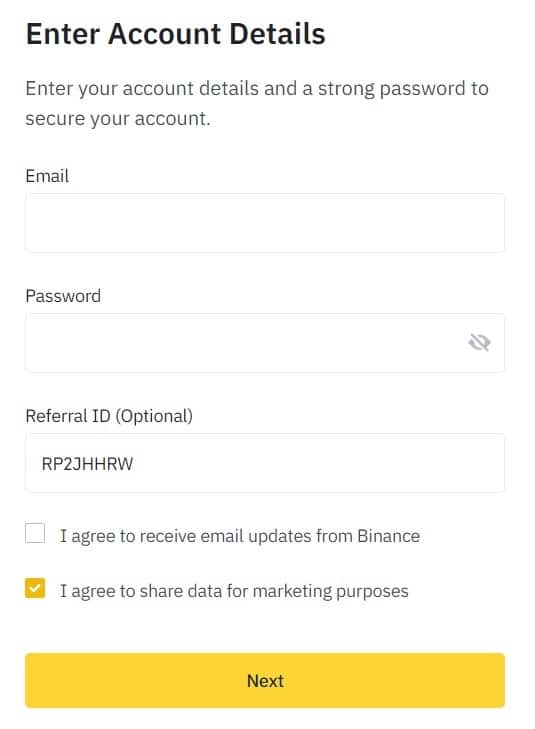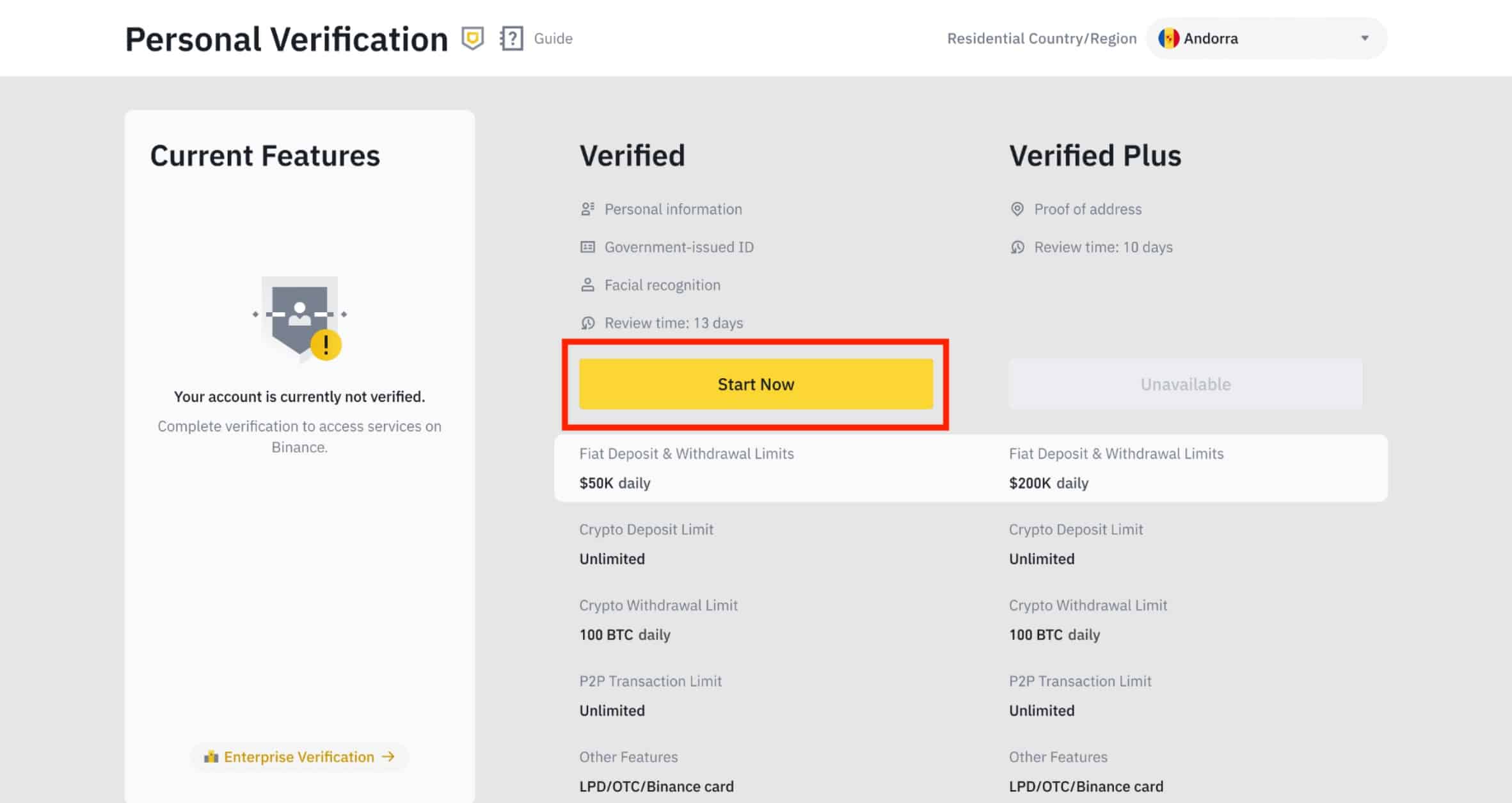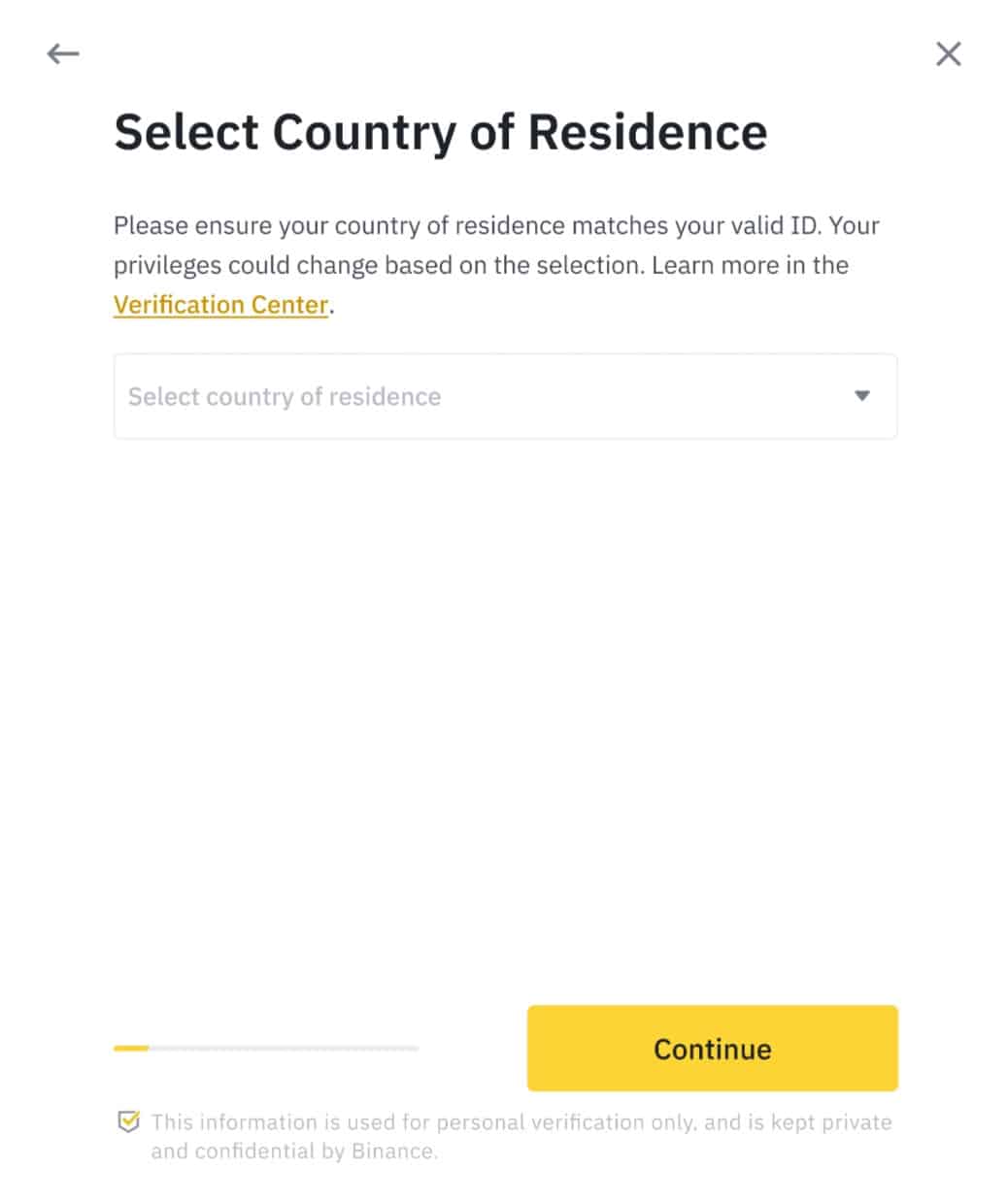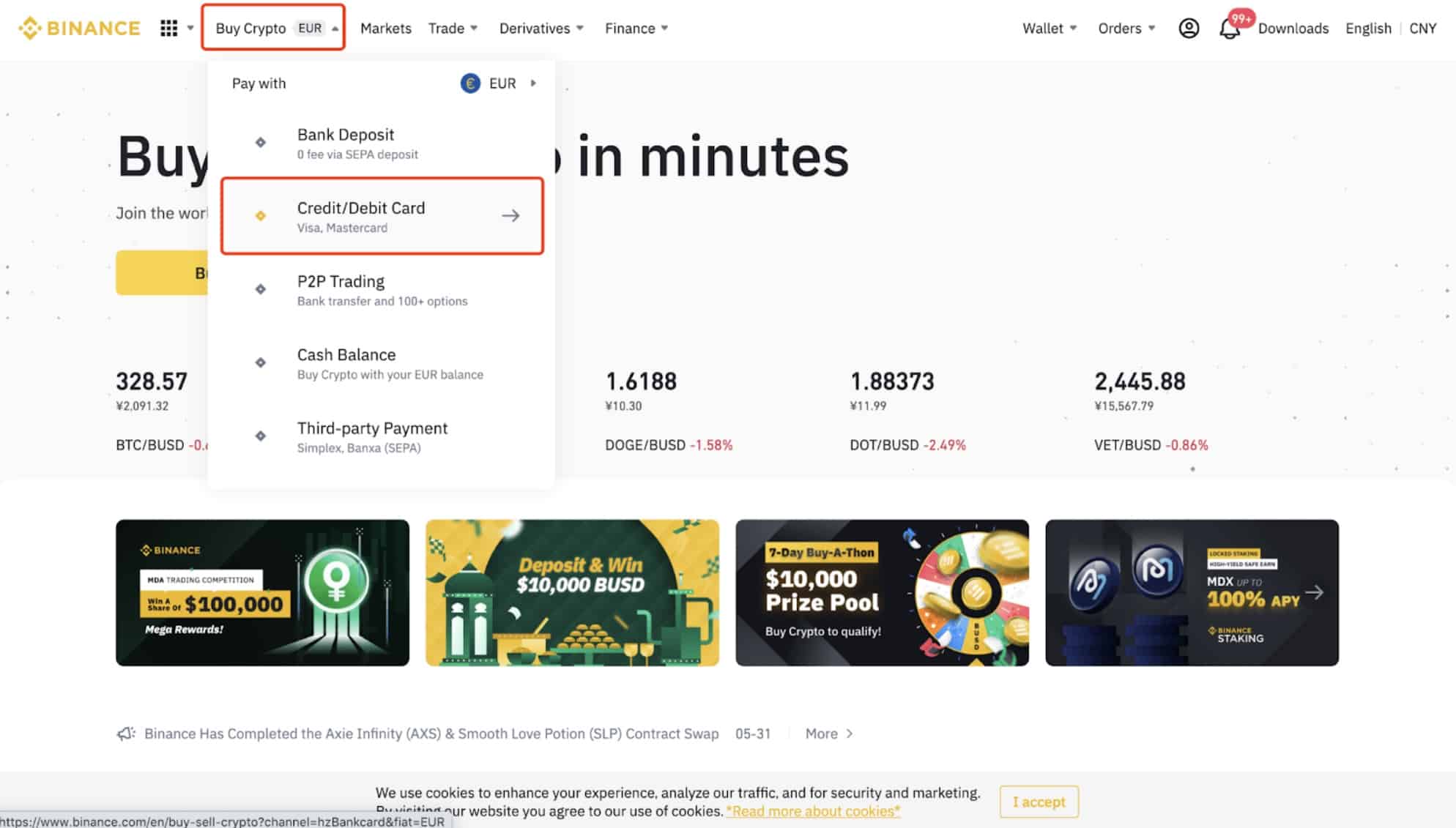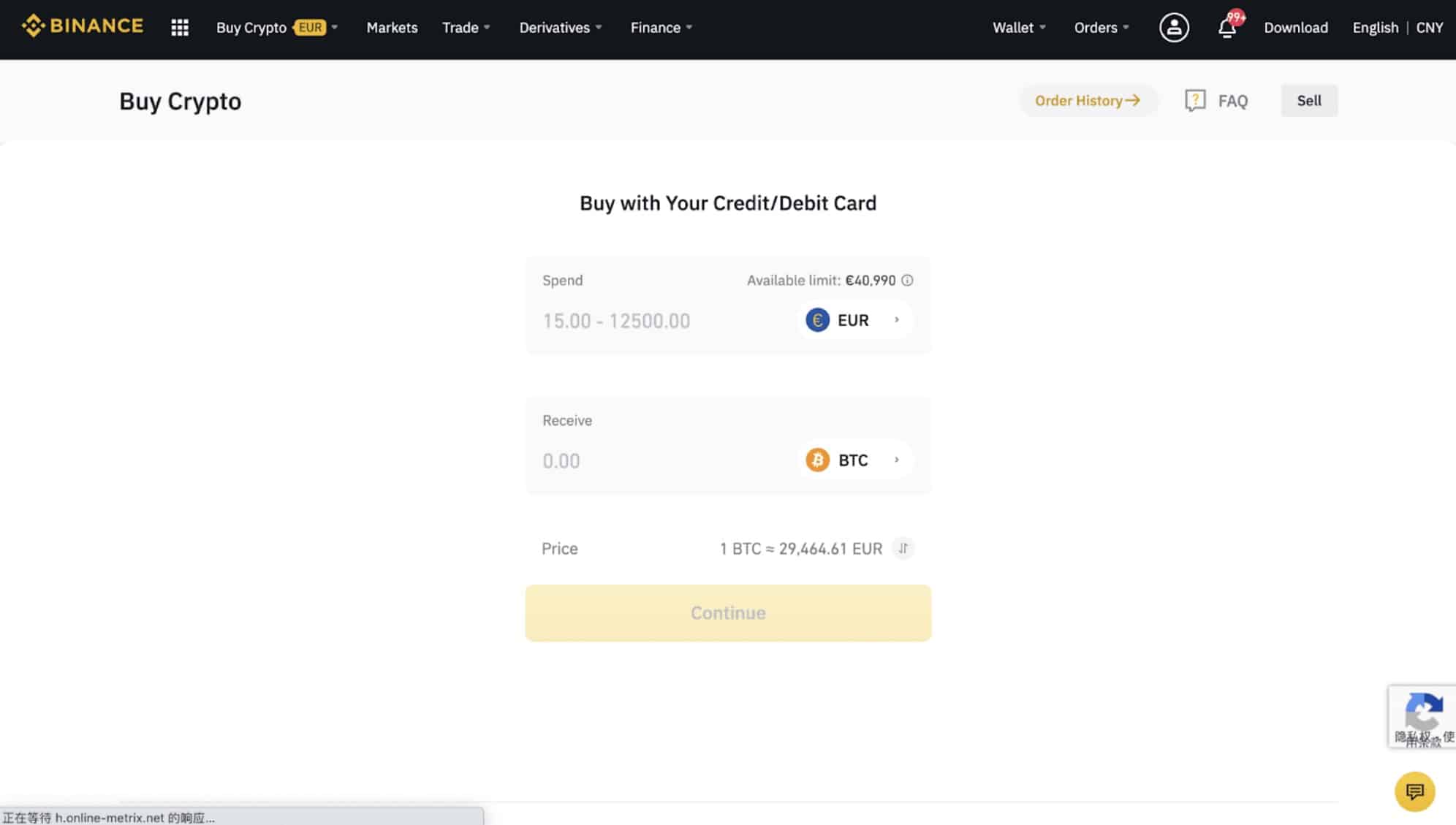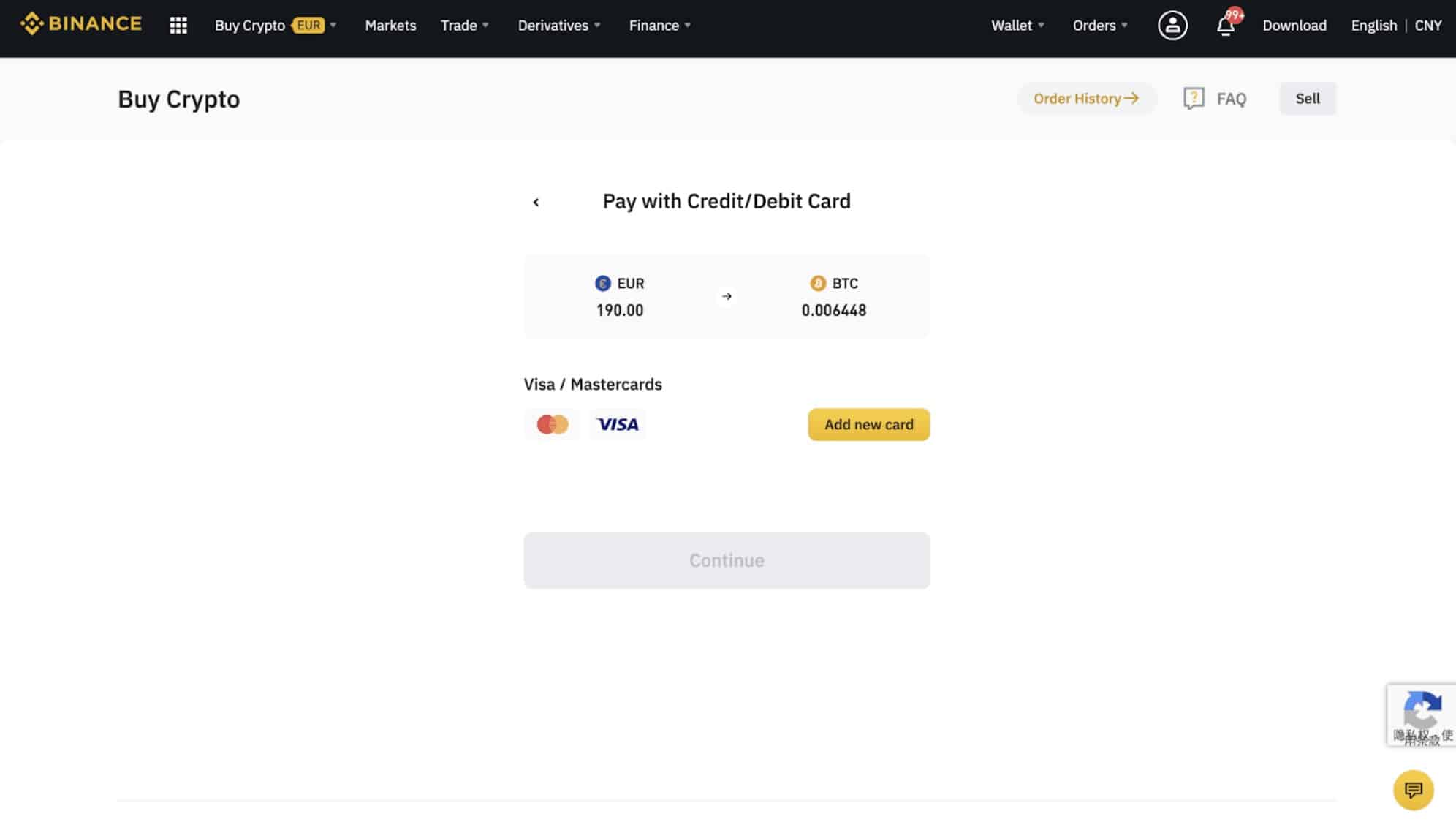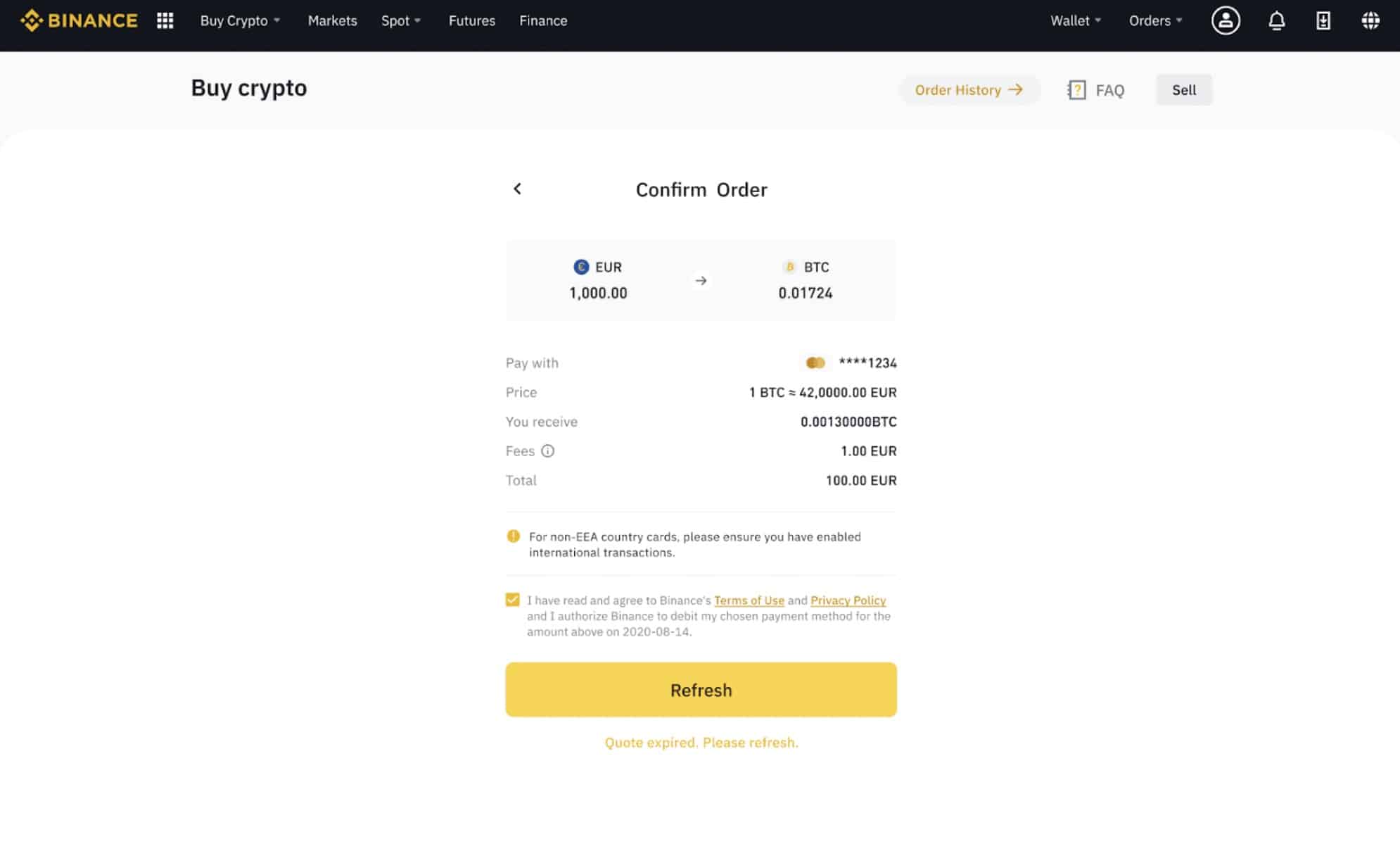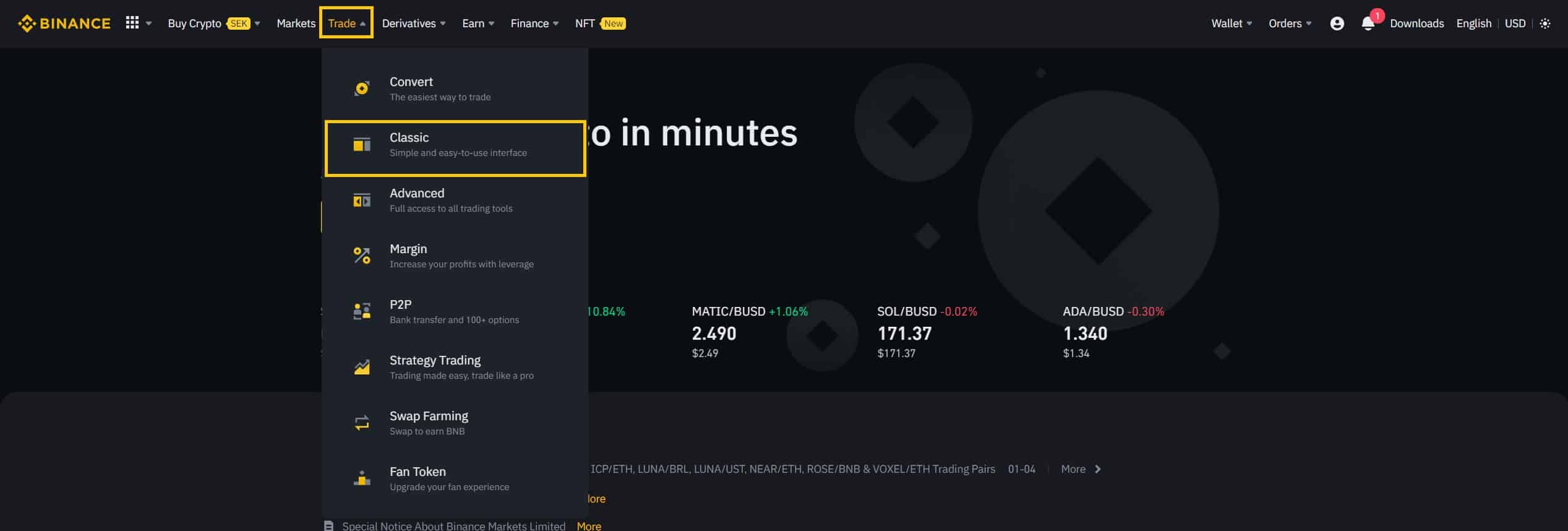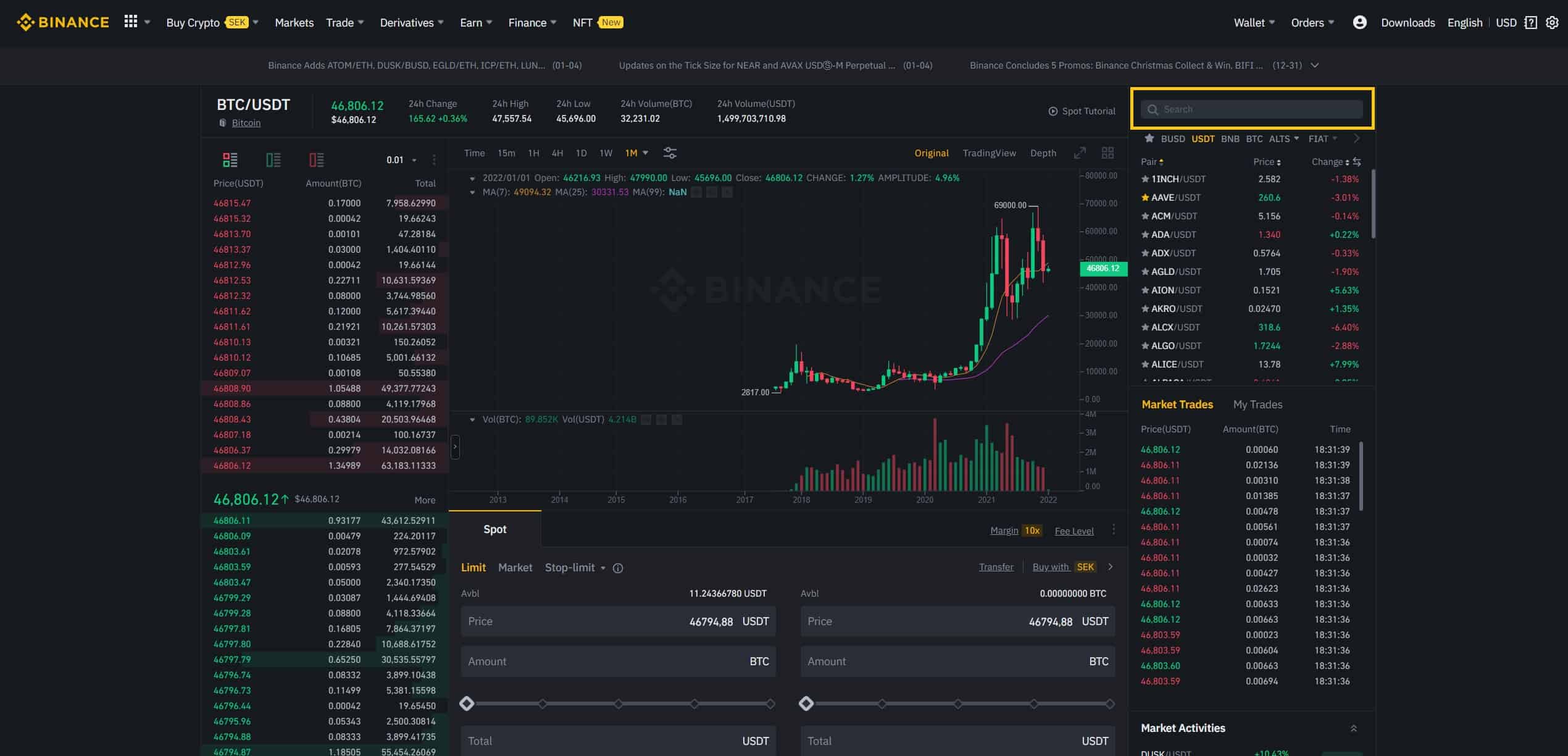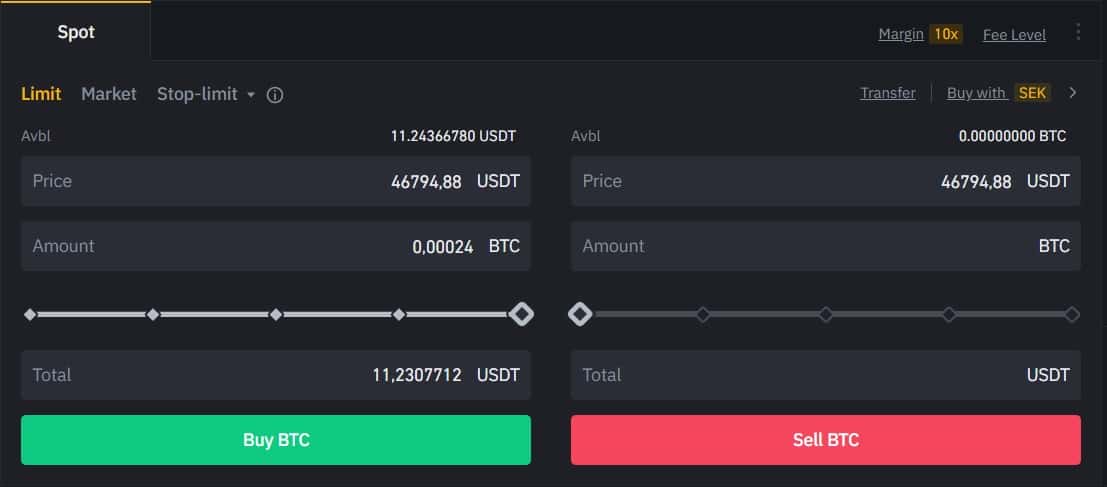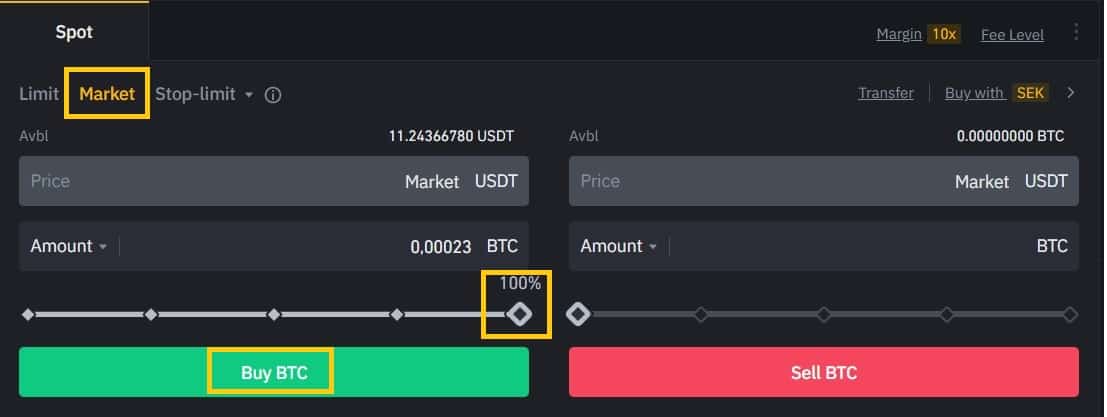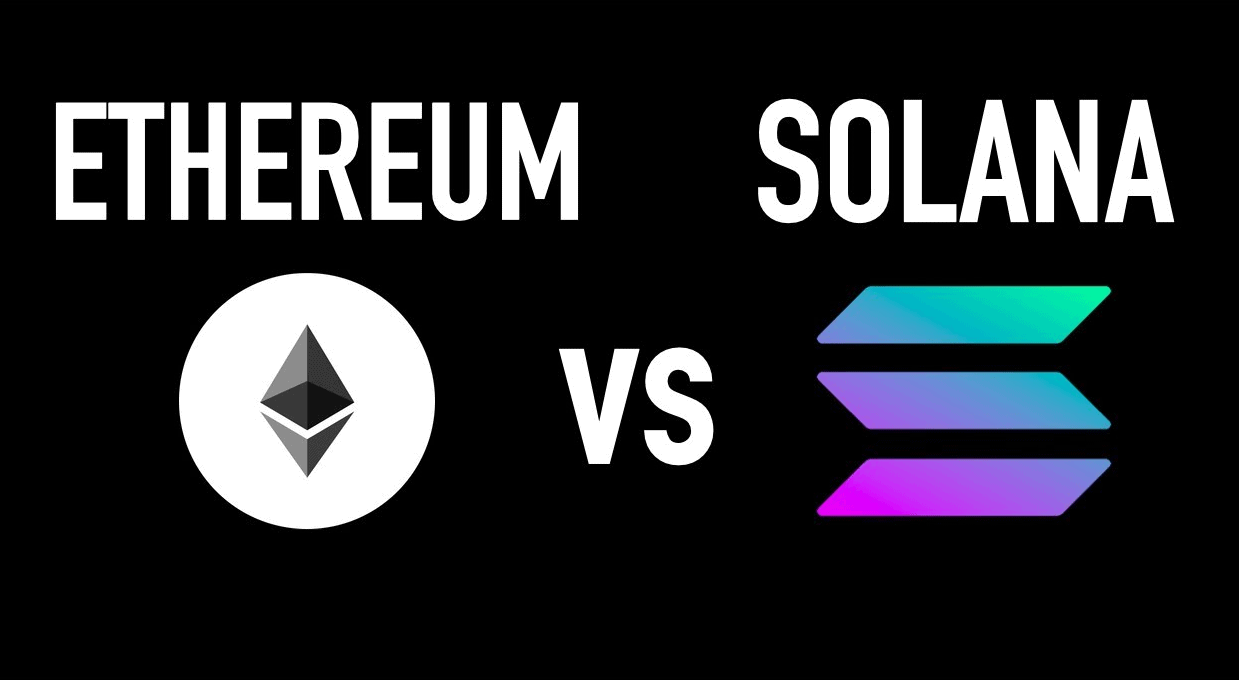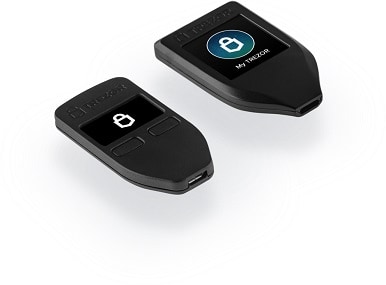How To Buy Solana (SOL)?
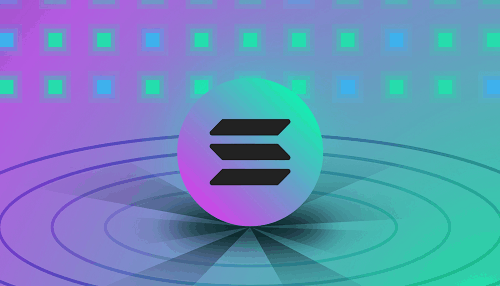
A common question you often see on social media from crypto beginners is “Where can I buy Solana?” Well, you’ll be happy to hear it is actually quite a simple and straightforward process. Thanks to its massive popularity, you can now buy Solana on most cryptocurrency exchanges, including Coinbase and Binance in 3 simple steps.
Step 1: Create an account on an exchange that supports Solana (SOL)
First, you will need to open an account on a cryptocurrency exchange that supports Solana (SOL).
We recommend the following based on functionality, reputation, security, support and fees:
1
Binance
Fees (Maker/Taker) 0.075%*-0.1%*
Cryptocurrencies
Available for Trade 500+
Sign-up bonus
10% reduced trading fees*
Available in
Europe, Asia, Oceania, Africa
2
Bybit
Fees (Maker/Taker) 0.1%*-0.1%*
Cryptocurrencies
Available for Trade 400+
Sign-up bonus
$30,000 sign-up bonus*
Available in
Europe, Asia, Oceania, Africa
In order to sign up, you will need to enter some basic information, such as your email address, password, full name and, in some cases, you might also be asked for a phone number or address.
Note: On specific exchanges, you might need to complete a Know Your Customer (KYC) procedure in order to be able to purchase cryptocurrency. This is most commonly the case with licensed and regulated exchanges.
Step 2: Deposit funds into your account
Many cryptocurrency exchanges will allow you to purchase Solana (SOL) with fiat currencies, such as EUR, USD, AUD and others. Furthermore, they will also provide you with multiple deposit methods through which you can fund your fiat account, such as credit and debit cards, ewallets or direct bank transfers.
Note: Some payment methods will have higher fees than others, such as credit card payments. Before funding your fiat account on your chosen exchange, make sure to do your due diligence to find out the fees involved with each payment method to avoid unnecessary costs.
Step 3: Buy Solana (SOL)
This process is similar across almost every cryptocurrency exchange. All you have to do is find a navigation bar or a search bar, and search for Solana (SOL) or Solana (SOL) trading pairs. Look for the section that will allow you to buy Solana (SOL), and enter the amount of the cryptocurrency that you want to spend for Solana (SOL) or the amount of fiat currency that you want to spend towards buying Solana (SOL). The exchange will then calculate the equivalent amount of Solana (SOL) based on the current market rate.
Note: Make sure to always double-check your transaction details, such as the amount of Solana (SOL) you will be buying as well as the total cost of the purchase before you end up confirming the transaction. Furthermore, many cryptocurrency exchanges will offer you their own proprietary software wallet where you will be storing your cryptocurrencies; however, you can create your own individual software wallet, or purchase a hardware wallet for the highest level of protection.
How to create a Binance account
Show Detailed Instructions
Hide Detailed Instructions
Step 1: Go to the Binance website.
Step 2: On the registration page, enter your email address, and create a password for your account.
Then, read and agree to the Terms of Service and click “Create Account”.
Note: Your password must be a combination of numbers and letters.
It should contain at least 8 characters, one UPPER CASE letter, and one number.
Step 3: Complete the Security Verification.
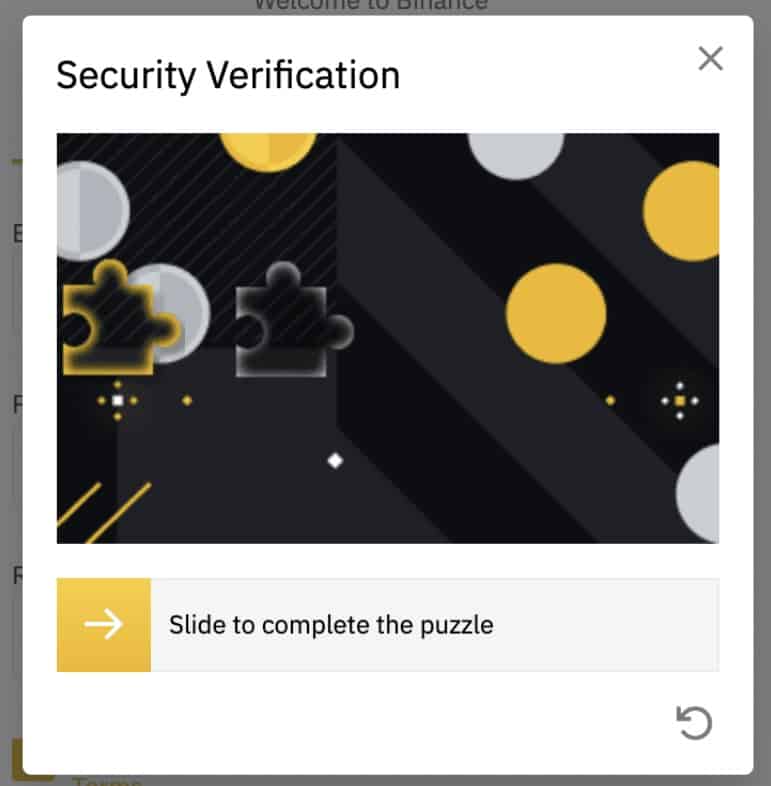
Step 4: The system will send a verification code to your email. The verification code is valid for 30 minutes. If you can’t find the email in your inbox, check your other mail folders as well, or click “Resend Email” to resend.
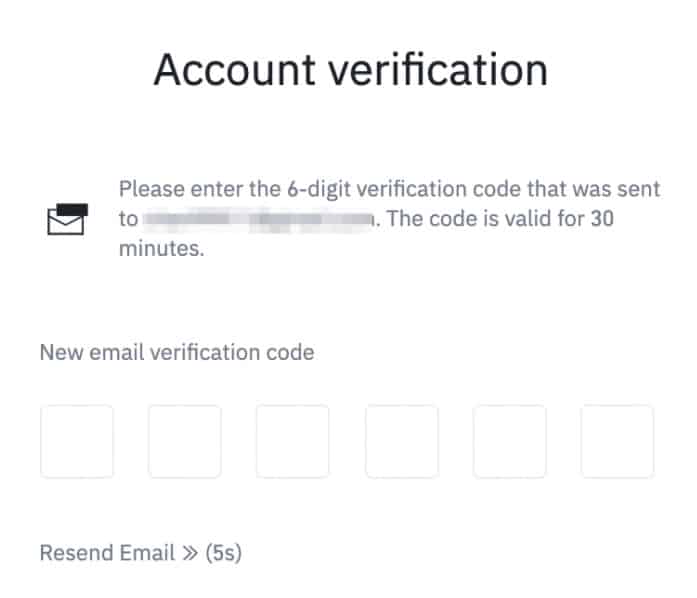
How to complete KYC (ID Verification) on Binance
Step 1: Log in to your Binance account and click “User Center” and then “Identification”.
Step 2: click “Start Now” to verify your account.
Step 3: Select your country of residence.
Ensure that your country of residence is consistent with your ID documents.
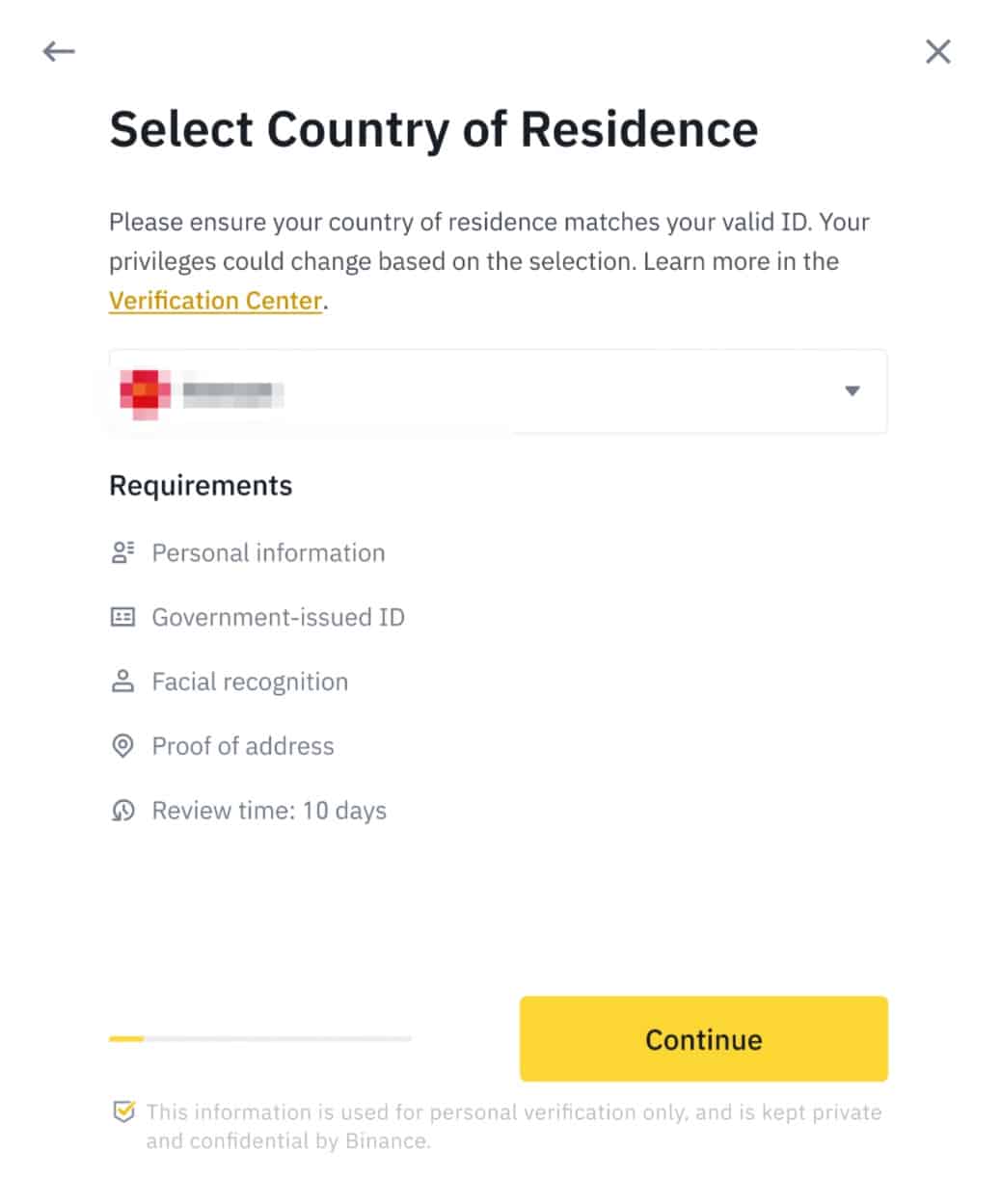
Step 5: Enter your personal information and click “Continue.”
You won’t be able to change it once confirmed.
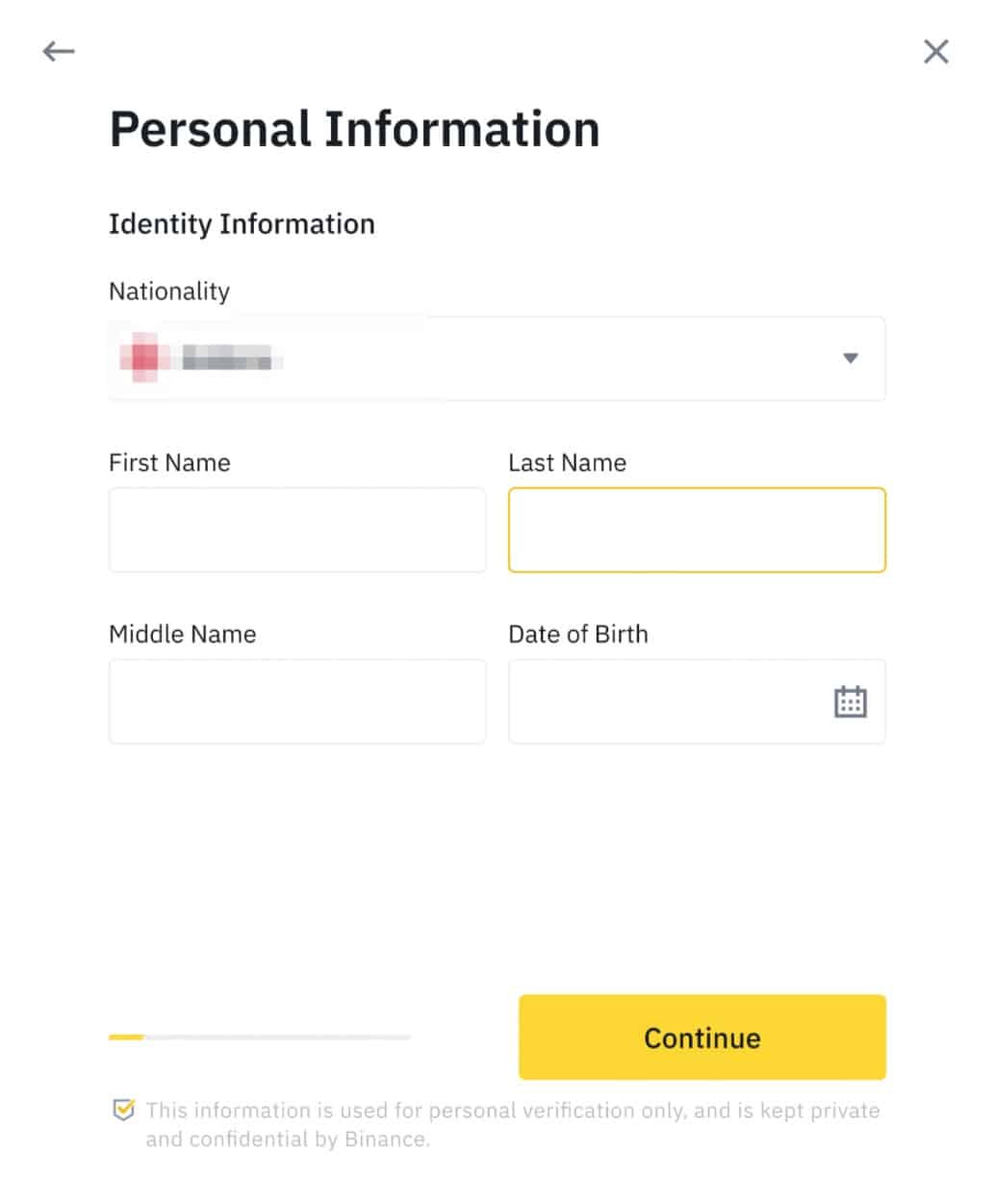
Refer to the respective options offered for your country.
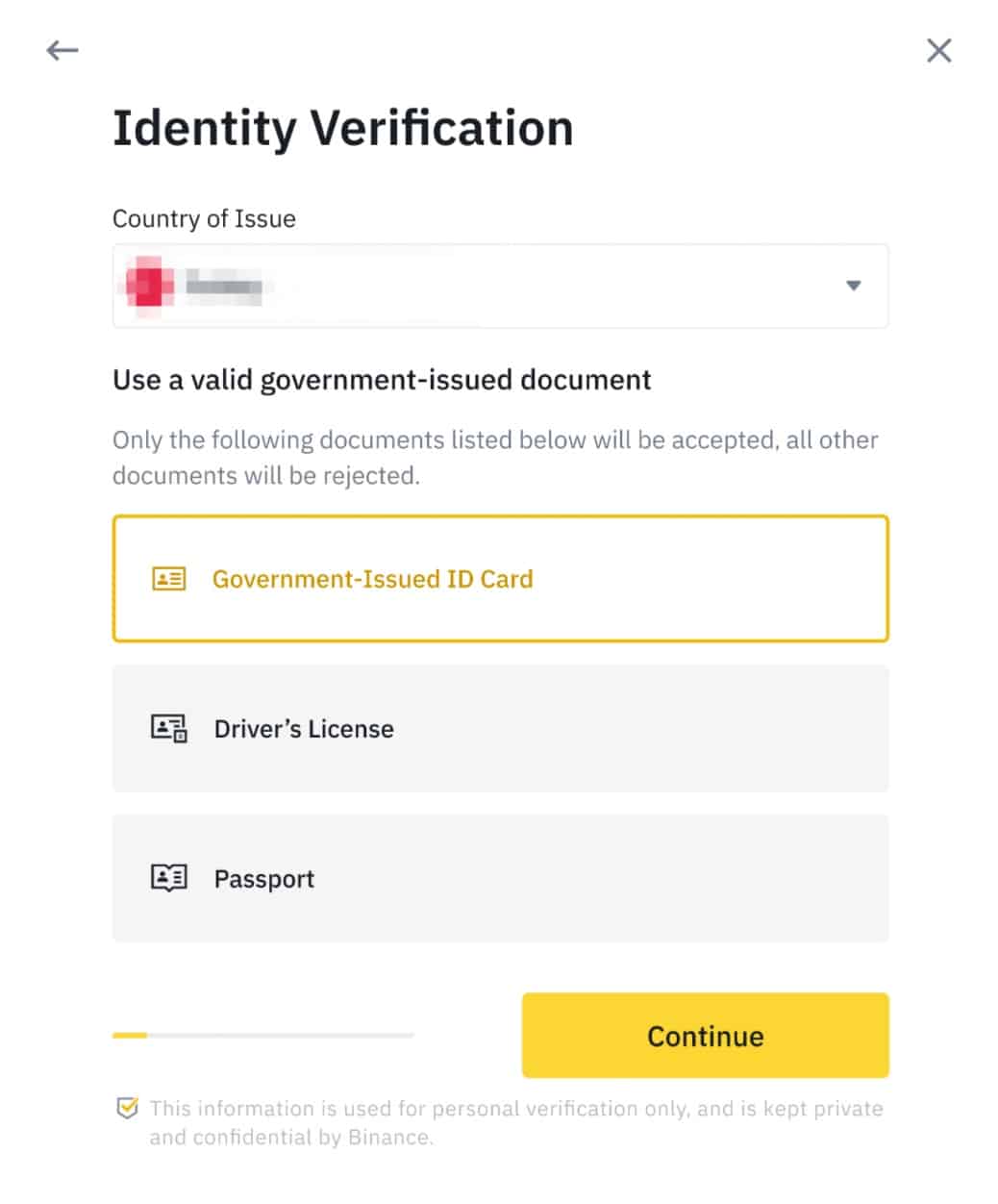
Step 7: Follow the instructions to upload photos of your document. Your photos should clearly show the full ID document.
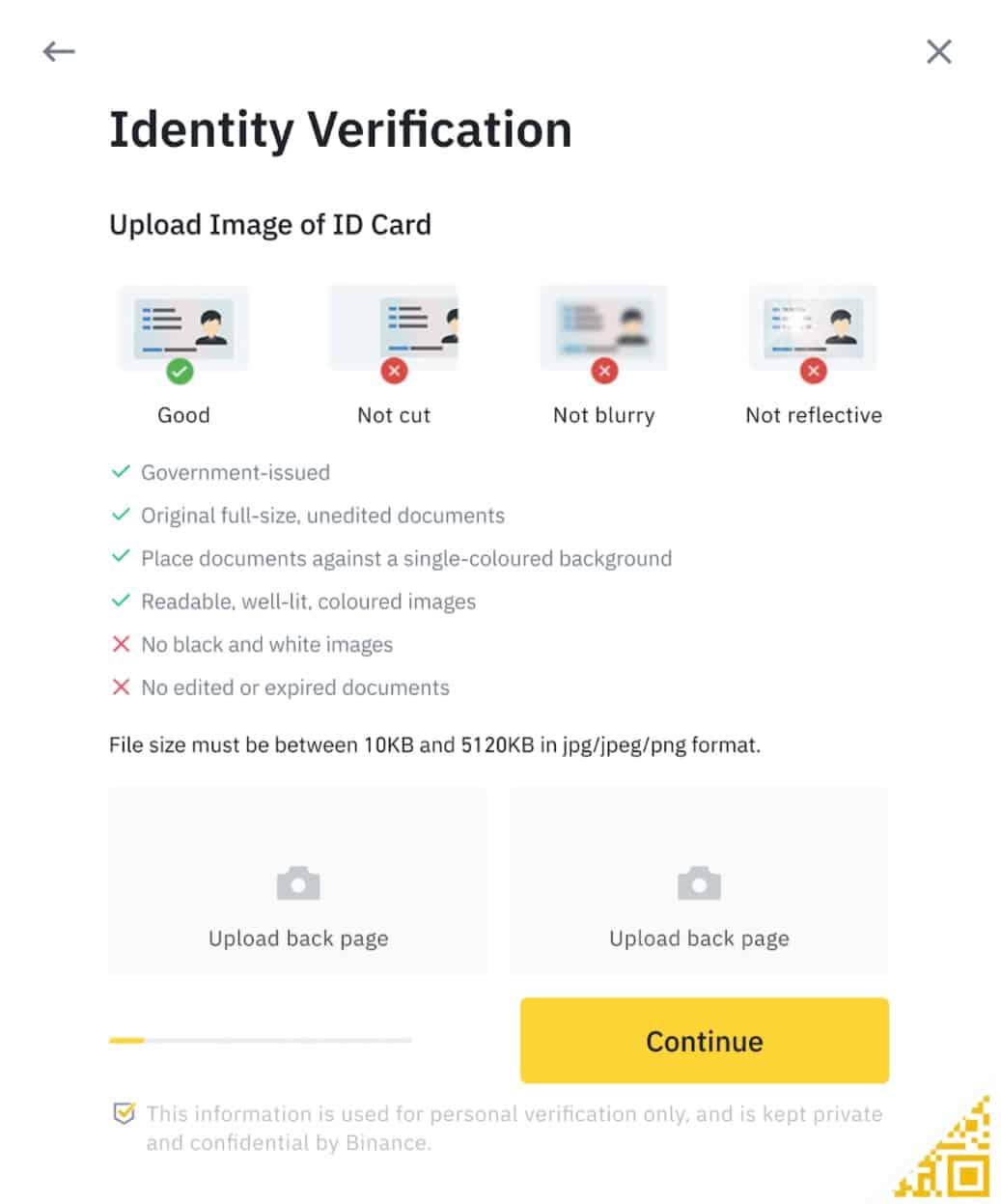
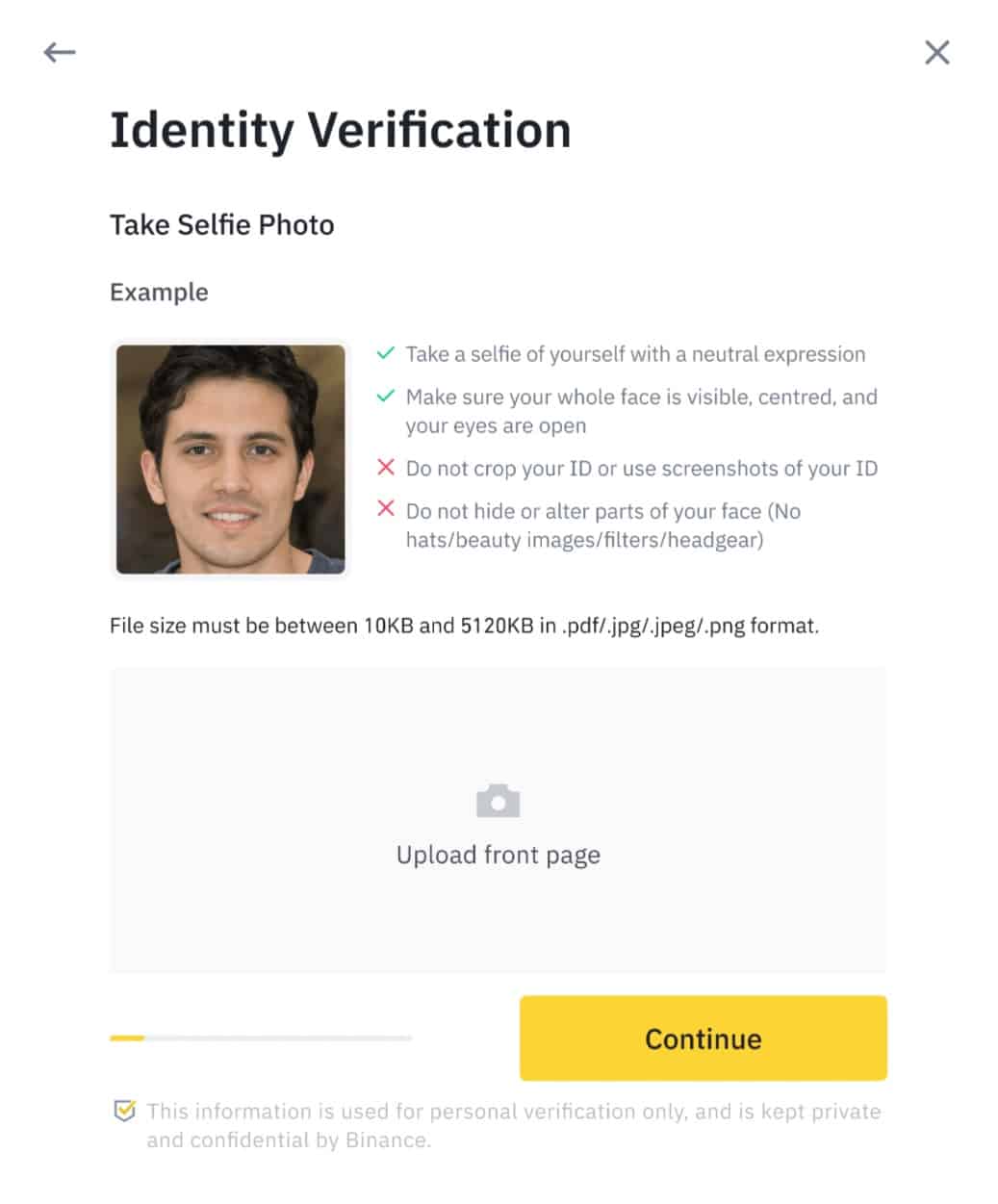
Do not wear hats, glasses, or use filters, and make sure that the lighting is sufficient.
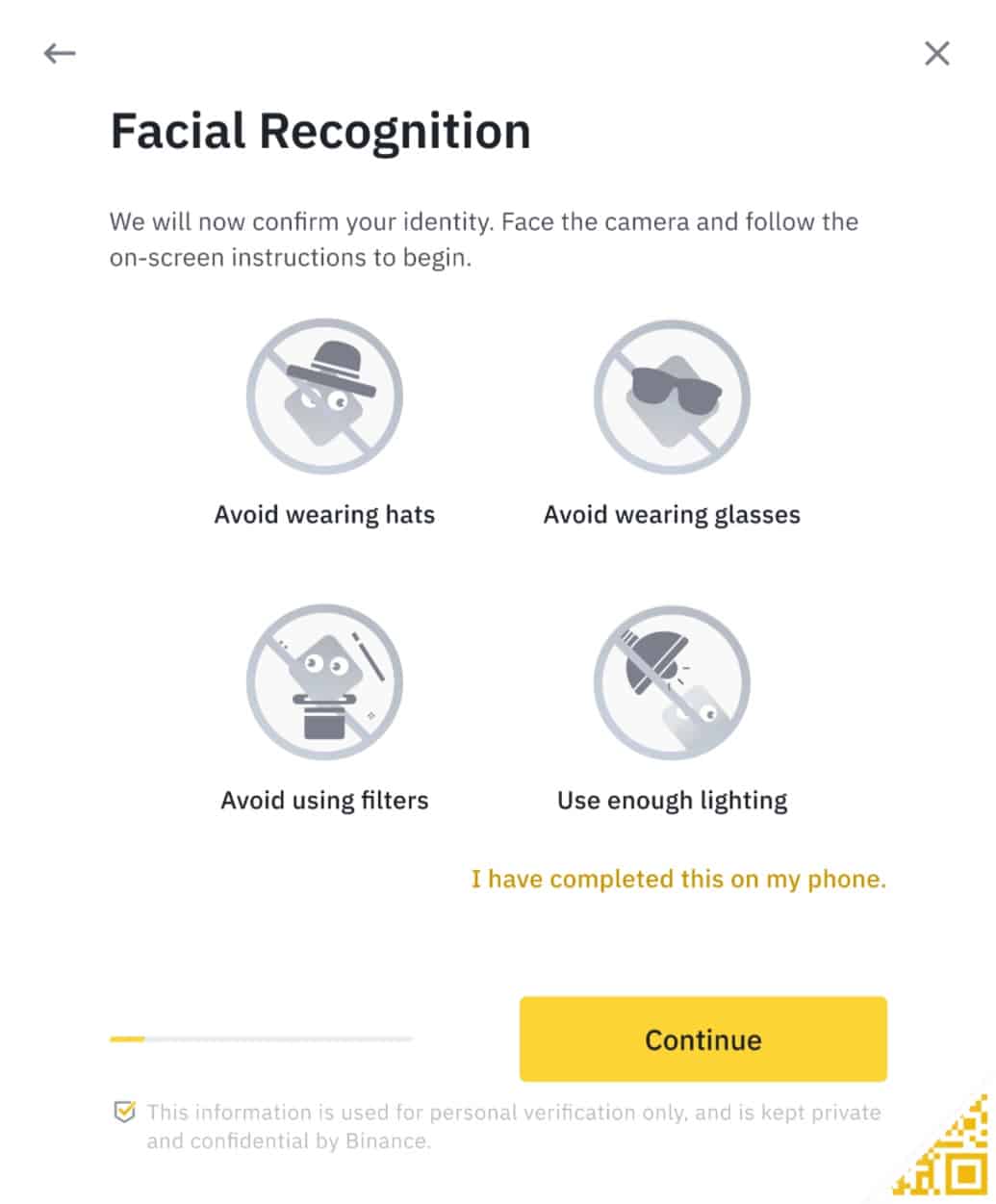
Once your application has been verified, you will receive an email notification.
How to buy cryptocurrency on Binance
Step 1: Log in to your Binance account and click “Buy Crypto” and then “Credit/Debit Card”.
Step 2: Here you can choose to buy crypto with different fiat currencies. Enter the fiat amount you want to spend and the system will automatically display the amount of crypto you can get. When you have selected the amount you wish to spend then press “Continue”.
Note: You might not be able to purchase every cryptocurrency directly using fiat, if you’re looking to purchase something that isn’t offered in the currency list on this page, then you will want to purchase USDT. We will then show you how to exchange that on the spot-market for the cryptocurrency that you want in the next section of this guide.
Step 3: Click “Add New Card”. Then enter your credit card details and your billing address.
Step 4: Check the payment details and confirm your order within 1 minute. After 1 minute, the price and the amount of crypto you will get will be recalculated. You can click “Refresh” to see the latest market price. You will then be redirected to your bank’s OTP Transaction Page. Follow the on-screen instructions to verify the payment.
How to Conduct Spot Trading on Binance
Step 1: Log in to your Binance account.
Click on “Classic” under “Trade” on the top navigation bar.
Step 2: Search and enter the cryptocurrency you want to trade.
Step 3: Set buying/selling prices and buying/selling amount (or exchange total). Then click on “Buy”/”Sell”.
(Note: The percentages under the “Amount” box refer to percentages of the total account balance.)
Step 4: If you don’t want to set a manual price, you can place a “Market Order” to set the buying/selling price automatically.
Hide Detailed Instructions
For more in-depth instructions, our ‘Absolute Beginner’s Guide To Cryptocurrency Investing‘ will take you through the process step-by step. In addition to providing instructions for sending and receiving your cryptocurrency.
And if you’re completely new to crypto our beginner, intermediate and advanced level articles will get you up to speed with everything you need to know about the cryptocurrency space starting out.
What is Solana (SOL)?
Solana is a blockchain network focused on fast transactions and high throughput. It uses a unique method of ordering transactions to improve its speed. Users can pay their transaction fees and interact with smart contracts with SOL, the network’s native cryptocurrency.
Founded in 2017 by Anatoly Yakovenko from Solana Labs, the Solana blockchain adopts a new method of verifying transactions. Bitcoin, Ethereum, and many other projects suffer from scalability and speed issues. Using a method known as Proof of History (PoH), the Solana blockchain can handle thousands of transactions per second.
How does Solana work?
What is Proof of History?
This hashing process creates a long, unbroken chain of hashed transactions. This feature makes a clear, verifiable order of transactions that a validator adds to a block, without the need for a conventional timestamp. Hashing also requires a certain amount of time to complete, meaning validators can easily verify how much time has passed.
By ordering the transactions in a chain of hashes, validators process and transmit less information in each block. Using a hashed version of the latest state of transactions greatly reduces the time of confirming a new block.
Solana’s key features
-
Tower BFT — a PoH-optimized version of Practical Byzantine Fault Tolerance
-
Turbine — a block propagation protocol
-
Gulf Stream — Mempool-less transaction forwarding protocol
-
Sealevel — Parallel smart contracts run-time
-
Pipelining — a Transaction Processing Unit for validation optimization
-
Cloudbreak — Horizontally-Scaled Accounts Database
-
Archivers — Distributed ledger storage
How fast is Solana?
Solana can process 50,000 transactions per second (TPS) or more. In fact, it says that number could increase to as much as 700,000 TPS as the network grows. To put that in context, Ethereum currently processes 15 to 45 TPS.
Visa says its payments system processes about 24,000 TPS. This is important because if cryptocurrencies are ever going to compete as a form of payment, they should at least be able to match Visa’s speed.
What is THE SOL token?
SOL uses the SPL protocol. SPL is the token standard of the Solana blockchain, similar to ERC20 on Ethereum.
The SOL token has two main use cases:
-
Paying for transaction fees incurred when using the network or smart contracts.
-
Staking tokens as part of the Proof of Stake consensus mechanism.
Solana vs. Ethereum
Solana has received numerous accolades for its speed and performance, and it has even been mentioned as a legitimate competitor to crypto industry leaders like Ethereum.
So, what distinguishes Solana from Ethereum, and can it be considered a potential Ethereum killer?
In terms of processing speed, Solana is capable of challenging the dominant smart contract platform, allegedly reaching speeds of over 50,000 TPS. To avoid slow transaction confirmation, Solana employs a variety of consensus algorithms. Because of this feature, Solana is one of the fastest blockchains in the industry, allowing it to compete with industries other than the crypto space.
In comparison to this massive number, the current Ethereum proof-of-work model can only handle 15 TPS. As a result, Solana outperforms Ethereum by thousands of times. Another benefit of the Solana network is its extreme cost-effectiveness, as the project implements new tokenomics for lower fees.
Furthermore, while implementing one of the PoS variations, Solana’s blockchain is eco-friendlier and more sustainable. In contrast, Ethereum’s current PoW model necessitates the use of massive computational power.
However, everyone in the cryptocurrency community is looking forward to Ethereum’s PoS upgrade. A new type of Ethereum is being developed, which will include an execution layer (previously known as Ethereum 1.0) and a consensus layer (previously Ethereum 2.0). It has the potential to significantly increase throughput, improve scalability, reduce transaction fees, and put an end to unsustainable power consumption.
Solana (SOL) outages
Solana’s network has been chastised for a number of network issues, some of which resulted in network shutdowns. In September 2021, for example, the network went down for 17 hours due to “resource exhaustion.”
The network has had a number of issues that haven’t alarmed many investors, despite the fact that Solana’s usage and price have increased over time. However, many skeptics are concerned that the network is not sufficiently decentralized, given that a small group of developers could make unilateral decisions such as shutting down the network.
It’s worth noting that Solana is a newer blockchain, and that most blockchains, including Bitcoin and Ethereum, have had brief outages.
As Solana co-founder Yakovenko said to his community on Reddit, “If it takes 2 years to build, it will take 2 years to stabilize.”
Much of the recent innovation in technology has stemmed from the philosophy of “move fast and break things,” an internal Facebook motto and a concept in which things should be built quickly and issues should be worked out later to avoid stifling innovation.
Solana (SOL) Partnerships
The Solana ecosystem is absolutely massive, and it’s constantly growing. It’s home to DeFi projects, NFT marketplaces, crypto lending protocols, and Web3 apps. During 2021, the number of projects on Solana grew from 70 to more than 5,100.
Here’s a selection of a few notable partners and projects:
- Solana and crypto exchange FTX worked together to build Serum, a high-speed, decentralized crypto exchange on Solana’s blockchain.
- Michael Jordan launched his debut NFT collection on HEIR, a Solana-based platform.
- NFT marketplace OpenSea is now listing Solana-based NFTs. It previously only offered Ethereum-based NFTs.
- Audius, an app designed to build a decentralized music community, chose to move to Solana. It researched more than 20 blockchain platforms before deciding.
- Solana also partners with the Arweave blockchain to permanently store large amounts of Solana’s data, including transaction history and NFT data files.
Solana development updates in 2023
Solana, known for its high throughput and low transaction costs, has made significant strides in 2023. The following are some of the most important developments:
-
Multi-Client Future and Increased Programmability: Solana is advancing towards having more than one independent validator client, enhancing network reliability and resiliency. This year, the network has become more programmable with tools like the Solidity compiler Solang, the Anchor framework, and Seahorse, which allows writing Anchor programs using Python. Token-22, a new token standard, is set to enable the development of new applications, including those involving royalties, ownership transfers, and confidential payments.
-
Performance Enhancements: There have been several upgrades to improve Solana’s performance. This includes turbine optimizations for instant global information transmission and upgrades to Solana’s Sealevel runtime, making transaction processing faster. Additionally, engineers are working on optimizing the transaction scheduler and playback.
-
Network Security Improvements: Security has been a focal point, with the network seeing an increase in validators, making it more secure and censorship-resistant. Upcoming security improvements include automatic audits developed by OtterSec and Sec3 to help catch smart contract and development errors. Consumer-facing products like the Solana Mobile Stack’s seed vault are also enhancing user security.
-
Network Performance Metrics: Solana’s network performance has shown steady improvement. The network has maintained a consistent average transactions per second rate, with maximum daily transactions per second seeing significant increases. This is due to network upgrades like QUIC, Stake Weighted QoS, and localized fee markets, which have enhanced network resilience during high traffic periods.
-
Confidentiality and Efficient Resource Usage: Solana is focusing more on confidentiality with features like Confidential Transfers. The recent update, v1.16, has reduced RAM usage for validators and introduced features like Epoch Accounts Hash for block and account verification issues. This update is part of a shift towards more agile release cycles, with smaller, more frequent updates planned.
-
Decentralization and Validators: Solana’s decentralization has been strengthened, with a significant number of independent validators and a high Nakamoto coefficient. Validators play a crucial role in network security, transaction verification, and consensus on network changes.
-
Integration with Other Platforms: Efforts are ongoing to integrate Solana with other blockchain platforms like Ethereum and Polygon to facilitate interoperability between these networks.
These updates highlight Solana’s ongoing commitment to improving efficiency, scalability, security, and programmability, indicating a robust roadmap for 2023 and beyond.
Official website: https://solana.com/
Best cryptocurrency wallet for Solana (SOL)
There are plenty of different crypto wallets available. The best one for you depends on your general trading habits and which provides the most security in your situation. There are two main types of wallets: hot storage wallets (digital) and cold storage or hardware wallets (physical). Both have their pros and cons, and there is not necessarily a right or wrong answer when it comes to figuring out which crypto wallet is best for you.
HOW DO I DECIDE WHICH cryptocurrency WALLET TO USE for Solana (SOL)?
Deciding which type of wallet to use depends on a variety of factors, including:
- How often you trade. In general, hot wallets are better for more active cryptocurrency traders. Quick login ability means you are only a few clicks and taps away from buying and selling crypto. Cold wallets are better suited for those looking to make less frequent trades.
- What you want to trade. As mentioned earlier, not all wallets support all types of cryptocurrencies. However, some of the best crypto wallets have the power to trade hundreds of different currencies, providing more of a one-size-fits-all experience.
- Your peace of mind. For those worried about hacking, having a physical cold wallet stored in a safe deposit box at the bank or somewhere at home, provides the safest, most secure option. Others might be confident in their ability to keep their hot wallets secure.
- How much it costs. It is important to investigate the costs associated with each wallet. Many hot wallets will be free to set up. Meanwhile, cold wallets, like any piece of hardware, will cost money to purchase.
- What it can do. While the basics of each cryptocurrency wallet are the same, additional features can help set them apart. This is especially true of hot wallets, many of which come with advanced reporting features, insights into the crypto market, the ability to convert cryptocurrencies and more. Security features can also be a good differentiator.
For a more in-depth overview of cryptocurrency wallets visit our “Cryptocurrency Wallets Explained” guide.
If you’re going to be dealing in larger volumes of crypto, investing in cold storage might prove advantageous.
Most widespead examples of this being the Ledger Nano and the Trezor.
Ledger manufactures cold storage wallets designed for users who want increased security. Their wallets are a physical device that connects to your computer. Only when the device is connected can you send your cryptocurrency from it. Ledger offers a variety of products, such as the Ledger Nano S and the Ledger Nano X (a bluetooth connected hardware wallet).
Trezor is a pioneering hardware wallet company. The combination of world-class security with an intuitive interface and compatibility with other desktop wallets, makes it ideal for beginners and experts alike. The company has gained a lot of the Bitcoin community’s respect over the years. Trezor offers two main models – The Trezor One and Trezor Model T (which has a built in touch screen).
Solana (SOL) Price & Charts
- Market Capitalization And Daily Trading Volume
- Current Market Price Of Every Cryptocurrency Relative To USD (And Some Local Currencies)
- Circulating And Total Supply
- Historical Charts With Prices Relative To USD, Bitcoin (BTC), And Ethereum (ETH).




